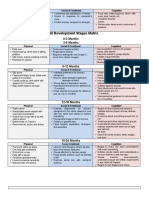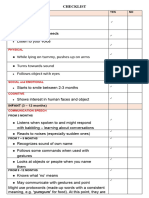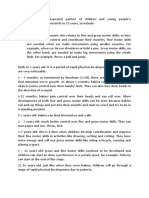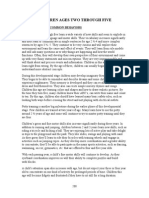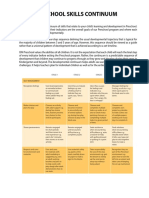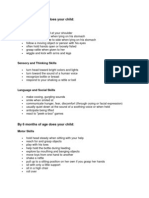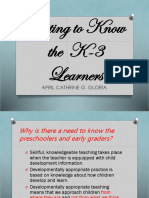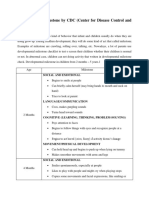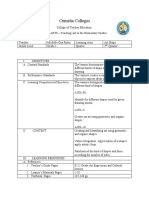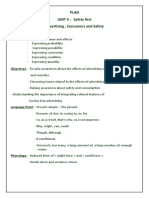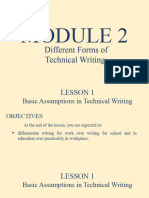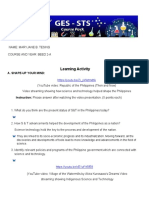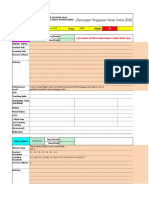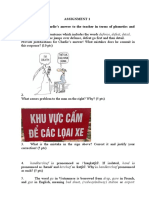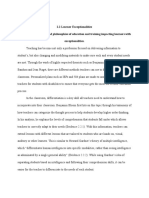0% found this document useful (0 votes)
44 views3 pagesChild Development Table
The document outlines typical child development milestones from ages 0-6 years across several domains:
1) Cognitively, children progress from recognizing people at 6-12 months to understanding basic concepts like counting, time, and same/different between ages 2-5 years.
2) In speech, language, and communication, children go from turning to familiar voices at 6-12 months to engaging in conversations and using full sentences between ages 3-5 years.
3) The document also mentions physical, emotional, social, brain, literacy, and numeracy development but provides no details on specific milestones for these domains.
Uploaded by
mello the hufflepuffCopyright
© © All Rights Reserved
We take content rights seriously. If you suspect this is your content, claim it here.
Available Formats
Download as DOCX, PDF, TXT or read online on Scribd
0% found this document useful (0 votes)
44 views3 pagesChild Development Table
The document outlines typical child development milestones from ages 0-6 years across several domains:
1) Cognitively, children progress from recognizing people at 6-12 months to understanding basic concepts like counting, time, and same/different between ages 2-5 years.
2) In speech, language, and communication, children go from turning to familiar voices at 6-12 months to engaging in conversations and using full sentences between ages 3-5 years.
3) The document also mentions physical, emotional, social, brain, literacy, and numeracy development but provides no details on specific milestones for these domains.
Uploaded by
mello the hufflepuffCopyright
© © All Rights Reserved
We take content rights seriously. If you suspect this is your content, claim it here.
Available Formats
Download as DOCX, PDF, TXT or read online on Scribd
/ 3












